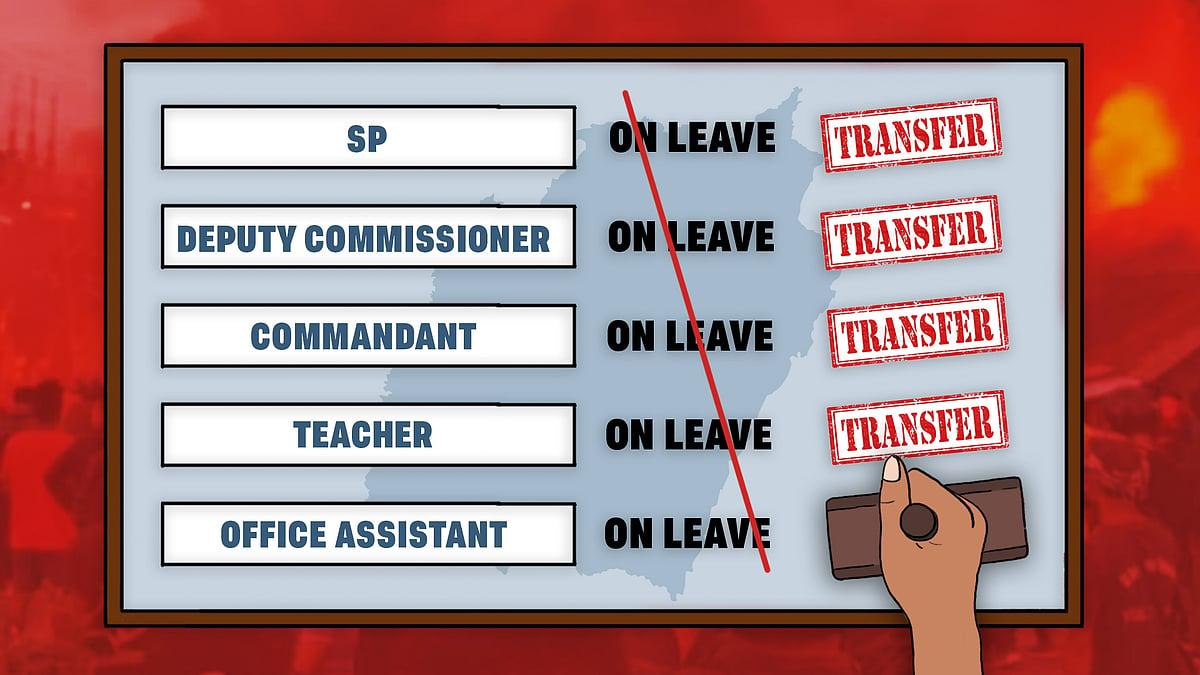Manipur FIRs: Nearly 2 months before Editors Guild report, army letter pointed to 3 cases, ‘media bias’
The guild is facing two FIRs over its fact-finding report about media coverage of the Manipur conflict.
In the hearing in which the Supreme Court extended its interim protection to the Editors Guild of India over the FIRs against its controversial fact-finding report, the guild said it had only visited Manipur on the army’s request.
When Chief Justice of India DY Chandrachud asked why “should the army invite you”, the guild said the army “wanted us to make an objective assessment of what is happening”.
The letter, just like the guild’s report, had alleged there was a bias in local Manipur media outlets. The guild’s report came on September 2, nearly two months after the letter dated July 12. Three members of the guild’s fact-finding team and its president were subsequently booked for publishing the “false, fabricated and paid” report on how Manipur media outlets have covered the ongoing conflict.
But what was the letter about?
Signed by Colonel Anurag Pandey of the information warfare wing, for the General Officer Commanding, the letter pointed out that the “bias of the media in favour of one community and against the other community emerges clearly” in daily reports.
The letter cited three examples of this bias and said that Imphal-based media’s “outright representation of facts” may be a major reason behind the violence. “I, therefore, request that an examination of the above reports be conducted to ascertain whether the guidelines for journalists and media houses have been violated by these media houses which appears one-sided and appropriate action be taken accordingly.”
“The quantum of incorrect reporting being enormous, the undersigned would like to clearly establish the facts of the matter through three cases as illustrations.”
The examples
The letter pointed to an incident in Khamenlok on June 13.
“The incident revolved around a mob which had raided villages of Khamenlok and adjoining areas commencing 12 June. The mob was duly supported by womenfolk who blocked Army troops trying to reach the village, so that the mob could go about burning the village unhindered. After carrying out arson of multiple villages, members supporting/ those who actually undertook arson were killed in a retaliatory strike. It was a clear case of the attackers being attacked. Few amongst those who got killed, not hailing from the area and the fact that they were killed in a village of the other community may serve to give an indication of turn of events on 13 June.”
It attached clips from Sangai Express, the People’s Chronicle and The Imphal Free Press with reportage which allegedly portrayed members of the mob as targets of one community.

It pointed to another case in Khoken on June 9, terming it a “black moment” for journalism.
“The Kuki village of Khoken was attacked at 4 am on 09 June by armed miscreants dressed in police uniforms. Three people were killed in the incident, including a 67 year old woman who was shot in the village church. A large number of Meitei women began gathering in the adjoining village of Sangaithel when news spread that the Army was engaging the attackers in a gunfight. The names of the deceased were posted on Twitter by a Kuki handle by noon on 09 June. Attack on Khoken village (Kuki Village) by Kuki militants & all those killed being termed as Kuki militants (one 67 year old woman & one 70 yr old man) could well serve to be another, black moment in journalism.”


It referred to another case of an alleged ambulance burning on June 4. “This incident was the nadir of journalism in Imphal and occurred in Iroisemba locality of Imphal.”

“A seven-year old Kuki boy being evacuated to hospital for a bullet injury was burnt alive inside an ambulance with his Meitei mother and another relative by a mob of Meiteis at around 6 pm. The father of the boy was a Kuki and that relation was enough to brand the entire family as belonging to the Kuki community. Two women and one child were burnt alive in the ambulance by the mob. The incident was completely blacked out by Imphal media, because it would project one community in poor light. An incident that should have been front page headlines was conspicuously absent from the newspapers and completely glossed over. It was, however, picked up by some national media reporters on 06 June and eventually emerged on most national media portals by 07 June. Even there, a failed attempt was made to attribute responsibility of the burning to a Kuki mob. Reputed media outlet which carried an incorrect version was forced to amend the story, only after an angry backlash across social media.”
The Supreme Court will hear the matter again on Friday.
 From cops to teachers, ‘transfers’ in Manipur mirror a deep ethnic divide
From cops to teachers, ‘transfers’ in Manipur mirror a deep ethnic divide